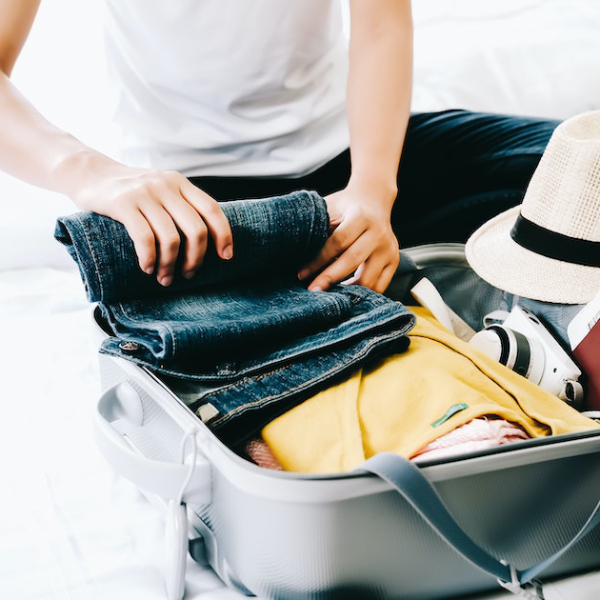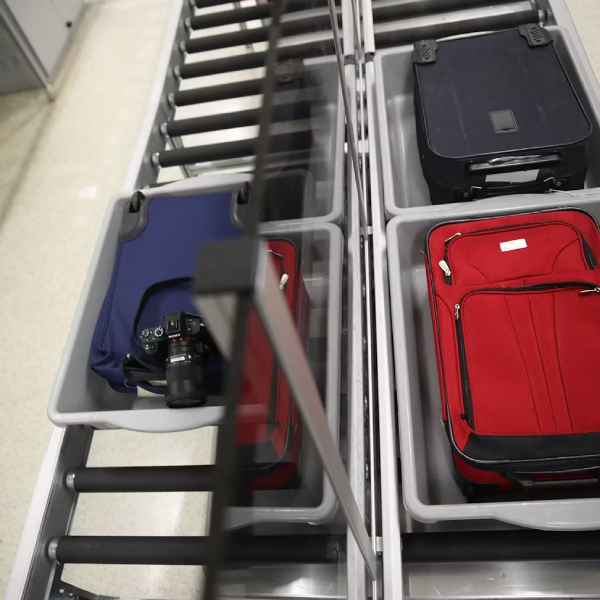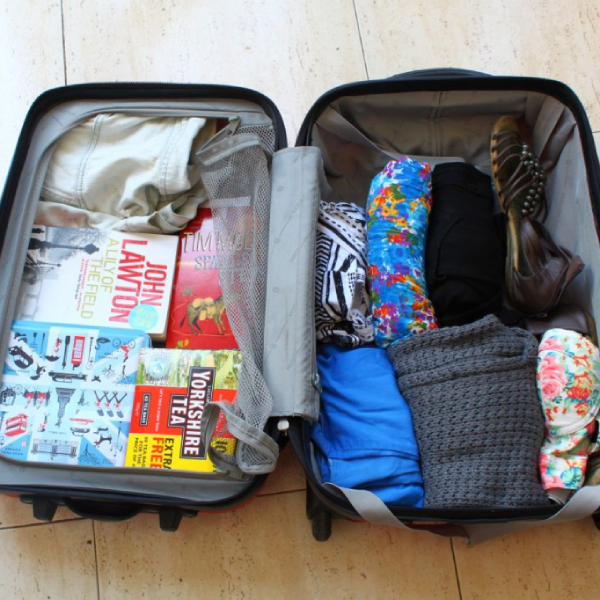TSA Guidelines for Prohibited Carry-On Items
Navigating TSA rules can be tricky when packing for a flight. It’s important to know the guidelines for prohibited carry-on items to ensure your travel goes smoothly. The TSA has specific regulations that travelers must follow. These rules help keep everyone on the plane safe. Items that could be dangerous or cause security concerns are often on the no-fly list. Knowing these rules can also help you avoid delays during the security check process. To ensure a smooth flight, always check TSA regulations on what you can pack in your carry-on bag before heading to the airport.

Understanding the Basics of Carry-On Restrictions
Each item you pack in your carry-on bag must meet TSA guidelines. Items that can trigger alarms or look suspicious on a scanner can lead to extra screening. Some things are fully banned from your carry-on. Liquids over 3.4 ounces, sharp objects, and flammable items are common examples. If you’re unsure whether an item is allowed, it’s best to check the TSA’s official website. Remember, even if an item is typically allowed, a TSA officer can prohibit it if they see a security risk. Items that can’t be turned on or look tampered with might also get banned. Make sure your devices are charged and in working order before you reach the airport security. When packing your Avianca carry-on size bag, ensure all items comply with TSA guidelines to avoid extra screening or prohibited items.
Prohibited Items: Aerosol Insecticides and Hazmat
When packing for a flight, it’s vital to be aware that certain items are not allowed in your carry-on bag. Aerosol insecticides, for example, are a big no-go when it comes to carry-on luggage. Although they may seem harmless, aerosols can create pressure changes and potentially become flammable, which poses a clear danger in the pressurized cabin of an airplane. The Transportation Security Administration (TSA) strictly prohibits these items in your carry-on. However, you may pack them in your checked baggage but be sure they are not labeled as hazardous material (HAZMAT).
The term HAZMAT encompasses a wide range of materials that can be dangerous during air travel. These include chemicals, explosives, and other substances that can harm passengers, aircraft, or the environment. But airlines and the TSA have stringent regulations for these materials, and in many cases, they are not permitted on flights at all. Even in your checked bags, restrictions apply, and it’s your responsibility to follow them to ensure safety and compliance.
Prior to departure, check with your airline for any additional guidance or restrictions on these items. Remember, ignoring these rules can lead to civil penalties or more serious consequences. Packing smart means checking the specifics for items you’re uncertain about, including aerosol insecticides and any potential hazardous materials. This precaution not only protects you and your fellow passengers but also helps you avoid delays during the security screening process. When considering what to pack in a carry-on, make sure to review airline guidelines for restricted items to ensure a smooth travel experience.
Electronic Devices and Battery Regulations
Navigating airport security with electronic devices can be stressful. To make your journey easier, get familiar with the regulations that apply to your gadgets. You need to know the TSA policies about electronic devices and batteries.
Preparing Your Electronic Devices for Flight
Power up all devices before you fly. TSA officers might ask you to switch on your devices. Dead electronics won’t be allowed on the plane. Ensure your devices have enough charge. This step helps demonstrate they’re working and safe for travel.

Carry batteries in your hand luggage. Devices with lithium batteries should stay in your carry-on. The FAA has rules about transporting batteries. Check these guidelines if you’re unsure about battery safety. Remove batteries from devices if needed. Then, place them in individual protective cases.
Some devices have special instructions. For example, those with built-in pumps might need extra checks. Always confirm with the airline about weight restrictions. Avoid surprises by contacting your airline ahead of your travel day.
Rules for Carrying Alcoholic Beverages
Travelers often like to carry alcohol when flying. It’s important to know the rules. Alcoholic drinks have specific regulations for carry-on and checked luggage. The TSA sets these policies. They help keep flights safe and orderly.
Restrictions on Alcohol Content and Packaging
You can carry alcohol in your bags with some limits. For carry-on, only small bottles are allowed. Each must be 3.4 ounces or less. But they should fit in one quart-sized bag. This policy is part of the TSA’s liquids rule.
For checked bags, the rules differ. You can bring alcohol if it is under 70% by volume. The FAA allows up to 5 liters per passenger in original, unopened retail packaging. But, airlines might have their own rules too. Check with them before your flight.
Alcohol over 140 proof is not allowed in carry-on or checked bags. High-proof alcohol can be a fire hazard. This is why both the TSA and FAA ban such items. It’s best to leave these drinks at home.
Pack your alcohol correctly to avoid spills. Spills can damage your luggage and other items. Plus, you don’t want to waste a good drink. Remember, you can’t drink your own alcohol during the flight. It is against the rules unless a flight attendant serves you.
Follow these guidelines to ensure a smoother security check and flight experience. Always stay informed on regulations because they can change. Safety is the top priority for all involved in air travel.
Ammunition and Firearms
Traveling with ammunition and firearms warrants attention to detail and adherence to strict regulations. Bringing these items onto an airplane is heavily regulated by the TSA and individual airlines due to their potential danger.
Securing Ammunition for Checked Luggage
To pack ammunition, use a strong box designed for ammo or original packaging. Make sure the box is secure and the ammo is not loose. This helps prevent accidents. Check with the airline for any limits or fees on ammunition. They often have strict policies.
Firearms can only travel in checked bags and must be unloaded. They also need to be locked in a hard-sided container. Contact the airline ahead to understand their rules for firearms. Always stay aware of the laws at your destination. Different places have different rules for firearms. Keep all items out of reach and secured properly to ensure safety and comply with regulations. If you’re concerned about security, remember that while firearms must be in checked bags, TSA may also take my vape out of my carry-on if it’s not compliant.

Unusual Carry-Ons: Antlers and Air Mattresses
When packing for a flight, you might consider bringing items that are not typical for travel. Antlers from a successful hunt or an air mattress for camping might be on your packing list. It’s essential to know that while these items aren’t banned, they do come with specific airline standards you must meet. Consider items like antlers or an air mattress that you can pack in a carry-on bag, but ensure they comply with airline standards.
Ensuring Your Unusual Items Meet Airline Standards
For items like antlers, check with your airline if they fit in the overhead bin or under the seat. Antlers may also require a protective cover to avoid damage or injury. Air mattresses with built-in pumps are allowed, but again, ensure they meet size and weight limits set by the airline.
Ask about any additional fees for unusual carry-ons. Secure your items properly to avoid issues during handling and flight. Follow these tips to travel with peace of mind, knowing you’ve packed your carry-on bag correctly for flight. Make sure to pack in your carry-on bag only essentials, and check for any extra fees to ensure a smooth travel experience.
Lighters and Fire-Starting Devices
Travelers often wonder about bringing lighters or fire-starting devices on flights. The TSA has clear guidelines for these items.
Safe Transportation of Lighters and Restrictions
Lighters are a common item that many people carry daily. However, when flying, you must follow specific rules. Normal lighters without a torch flame can generally go in carry-on bags. Each passenger is allowed one lighter. For safety, the TSA asks you to keep your lighter on your person or in your carry-on.
Arc lighters, plasma lighters, and e-lighters are more complex. You can carry these in your carry-on bags. But you need to take steps to prevent them from turning on during the flight. You should remove batteries or secure the lighter in a safety case. This stops accidental activation.
No lighters are allowed in checked luggage. The pressure changes in the cargo hold could lead to danger. Remember, recharging these devices during the flight is not allowed either. If your lighter exceeds certain limits, it won’t fly with you. These include a 100 Wh limit for lithium ion batteries. For metal batteries, the limit is 2 grams of lithium.
Matchbooks are another story. You can bring one book of safety matches on the plane in your carry-on. Strike-anywhere matches are banned from carry-ons and checked bags. These matches can easily ignite, causing a fire hazard. You can pack a book of safety matches in your carry-on bag, but remember that strike-anywhere matches are not allowed for safety reasons.
Torch lighters and any lighter containing unabsorbed liquid fuel are also banned from carry-ons and checked bags. They pose a higher risk because of their potent flame.
Always review the latest TSA guidelines before you pack. Rules can change and it’s best to be up-to-date. Avoid problems at security by preparing your lighters and fire devices properly. Safe travel is the goal for everyone.